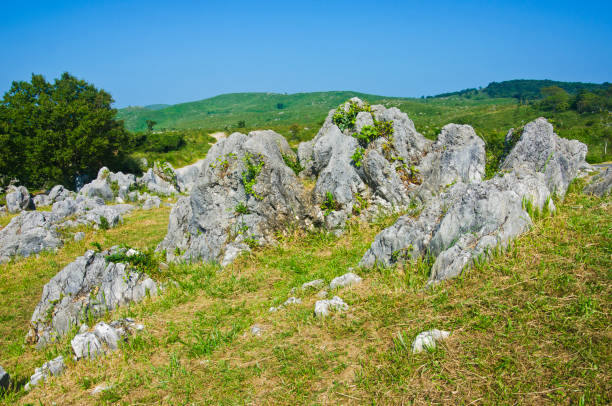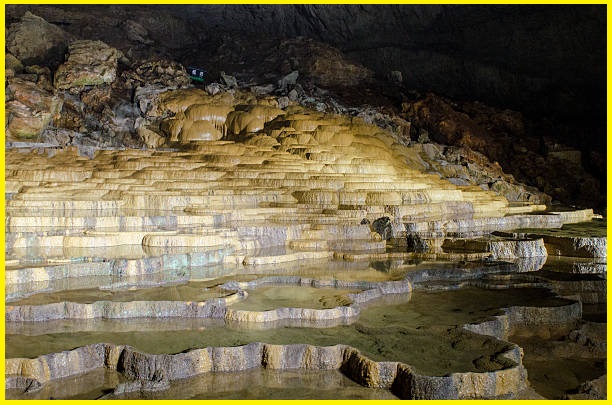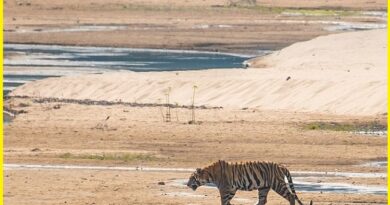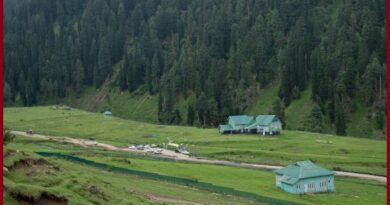Akiyoshidai Plateau and Its Hundred saucers in Yamaguchi Prefecture
Akiyoshidai Plateau
Akiyoshidai plateau, also known as Akiyoshidai Quasi-National Park, is a plateau located in the western part of Yamaguchi Prefecture, Japan. It is characterized by its vast, flat limestone surface, which was formed by the accumulation of ancient coral reefs. The plateau covers an area of approximately 130 square kilometres and has an average elevation of around 300 meters above sea level.
Akiyoshidai plateau is famous for its unique landscape, which features numerous sinkholes, underground rivers, and limestone caves, including the Akiyoshido Cave, which is one of Japan’s most extensive limestone cave systems. The area is also home to a variety of flora and fauna, including rare plant and insect species.
In addition to its natural beauty, the Akiyoshidai plateau is also known for its cultural significance. The area has been inhabited for thousands of years and is home to several ancient burial mounds and ruins, including the remains of a castle and a temple. The plateau is also known for its traditional limestone mining industry, which has been active in the area for over 350 years.

Geology
The Akiyoshidai plateau consists of uplifted limestones of Paleozoic age, which were thickened by overfolding during the Akiyoshidai orogenic movement. Subsequent erosion has created an undulating karst landscape consist many Dolines and countless limestone pinnacles up to 2 meters in height. Beneath the surface lie hundreds of caves. Numerous fossils of Pleistocene age have been found in these caves, including those of the Japanese rhinoceros, Stegodont elephant, Naumann elephant, Young tiger, and many other animals from the last interglacial period.
Akiyoshido Cave
Akiyoshido Cave is Akiyoshidai Quasi-National Park in Yamaguchi Prefecture, Japan. It is one of the largest limestone caves in Japan, with a total length of around 10 kilometers, although only a small portion is open to the public.

The cave was formed over millions of years by the erosion of limestone rock by underground rivers. The unique geological features of the cave include underground waterfalls, crystal-clear pools, and intricate stalactite and stalagmite formations. Visitors can explore the cave via a well-lit walkway, which winds its way through the various chambers and passages.
Also read- The Weald Basin and Oil-bearing Jurassic Shale Kent
One of the most impressive sections of the cave is the “Organ Room,” which features a series of towering stalactites that resemble the pipes of an organ. Another highlight is the “Fairy Palace,” a section of the cave filled with delicate formations that sparkle in the light.
Hundred saucers in Akiyoshido
The term “hundred saucers” is a reference to a particular feature in Akiyoshido Cave, one of Japan’s largest limestone caves. The feature consists of a large number of flat, disc-shaped limestone formations that are arranged in rows along the walls of the cave. The formations are said to resemble saucers or plates, hence the name hundred saucers or Hyakumaizara.
The hundred saucers in Akiyoshido Cave were formed by the slow dripping of mineral-rich water onto the limestone walls of the cave. Over time, the water evaporated and left behind thin layers of calcite, which gradually built up to form the flat, disc-shaped formations.

Visitors to Akiyoshido Cave can see the hundred saucers up close by walking along a designated path that takes them through the cave’s various chambers and passages. The formations are illuminated by artificial lights, which create a striking contrast between the dark limestone walls and the bright white saucers.
Quasi-National Park
Quasi-National Park in Yamaguchi Prefecture includes part of the Akiyoshi plateau a 130 square kilometre area of karst topography, as well as over 300 limestone caves. Quasi-National Parks are established to protect and preserve unique natural and cultural features, and to promote sustainable tourism and outdoor recreation. The Akiyoshidai Groundwater System is a Ramsar Site and wetland of international importance. Akiyoshidai is the largest karst plateau in Japan, spread in the middle and eastern part of Mine City. It was designated as a National Monument in 1955 and a special natural monument in 1964.
Akiyoshidai plateau and Quasi-National Park is a popular tourist destination and attracts visitors from all over Japan and beyond. The area offers a range of outdoor activities, including hiking, caving, and wildlife watching, as well as cultural experiences such as traditional crafts and local cuisine.



